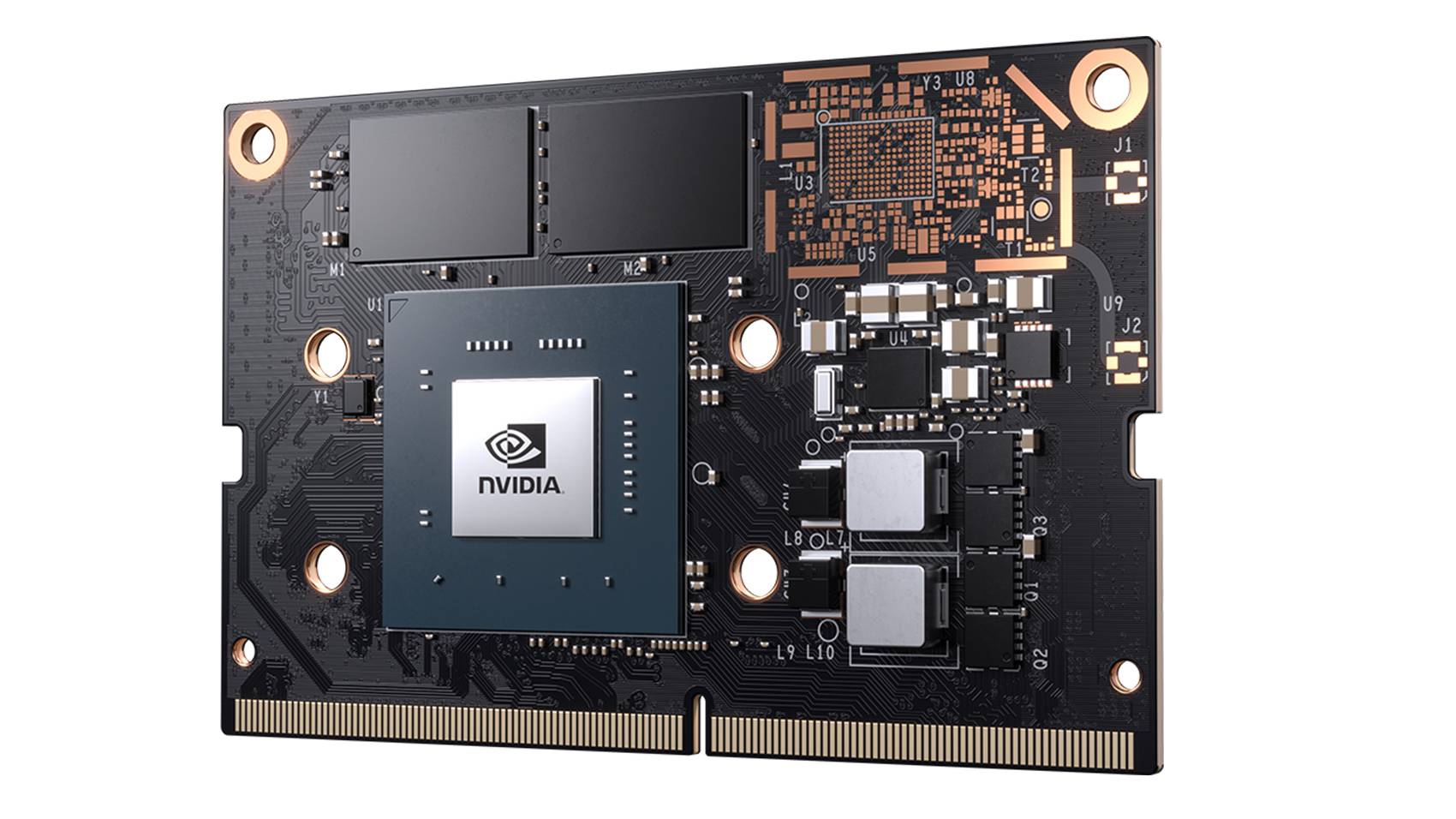Introduction of edge computing for computer vision
In the dynamic realm of technology, edge computing has emerged as a transformative concept, gaining traction particularly when synergized with computer vision. Edge computing signifies processing data close to where it’s generated, diverging from traditional reliance on distant cloud-based servers. This proximity leads to quicker, more efficient data handling, essential in our real-time, data-driven world. Computer vision, which involves algorithms and machine learning to interpret visual data, benefits immensely from edge computing. This blend of technologies opens up a plethora of possibilities, revolutionizing how machines interpret our world. This article explores edge computing in the context of computer vision, examining its advantages, challenges, and the promising horizon it brings.

Industrial rugged edge devices, Nvidia Jetson being the most powerful one on the market, are small and can be placed inside street cabinets or server rooms. As long as they can connect to the camera via the internal network.
You can order them here
What are the advantages of Edge Computing for Computer Vision?
Reduced Latency and Real-Time Processing:
The standout advantage of edge computing is its drastic reduction in network latency, enabling real-time data processing. This is crucial in scenarios like autonomous driving and surveillance, where immediacy is key. For instance, traffic management systems utilizing edge computing can adjust signals in real time to optimize flow, demonstrating the practicality of this advantage.
Bandwidth and Cost Reduction
Processing data locally, edge computing significantly diminishes the need for extensive data transfers to the cloud, saving bandwidth and reducing operational costs. Retail operations, for instance, leverage edge computing for instantaneous inventory updates, avoiding the need for constant, heavy data uploads.
Enhanced Privacy and Security
By processing sensitive data on local devices, edge computing strengthens privacy and minimizes exposure to cyber threats. This is particularly relevant in healthcare, where patient data security is critical, and edge computing ensures that sensitive information remains confined to local devices.
Scalability and Flexibility
Edge computing’s adaptable nature allows businesses to quickly respond to market changes. In smart factories, for example, edge computing facilitates the seamless integration of new machinery and sensors, showcasing its scalable and flexible characteristics.
Edge Computing Infrastructure for Computer Vision
The infrastructure required for edge computing in computer vision encompasses both hardware and software considerations. Hardware involves edge servers and IoT devices capable of processing complex data. Software aspects include algorithms and frameworks tailored for edge computing. Network architecture is pivotal too, with technologies like 5G enhancing data transfer speeds. A practical example is found in manufacturing, where edge computing infrastructures are tailored to manage and process data from numerous sources seamlessly.
What are challenges of Implementing Edge Computing for Computer Vision?
Resource-Intensive Algorithms
The complexity of computer vision algorithms, demanding significant processing power, poses challenges, especially for resource-constrained edge devices. Balancing algorithm efficiency with hardware limitations is a continual area of development. Important is to therefore pick the right edge device in advance. Talk to a specialist to find out more.
Data Management and Security Concerns
Handling vast streams of data securely on edge devices is challenging. Protecting these devices from cyber threats and managing their data storage capabilities requires ongoing attention and innovation.
Device Calibration and Maintenance
Maintaining and updating a fleet of edge devices, especially in large-scale deployments, poses logistical challenges. Ensuring consistent performance and security updates across these devices is a task requiring significant resources.
What are applications of Edge Computing in Computer Vision?
Autonomous Vehicles
Edge computing allows autonomous vehicles to process sensor data in real-time, crucial for instant decision-making. This includes obstacle detection, route planning, and environmental awareness, all processed locally for immediate action.
Security Systems
In security, edge computing enables real-time facial recognition and threat detection, critical for timely responses to security incidents.
Healthcare
In healthcare, edge devices process data from wearable medical devices to detect anomalies, alerting healthcare professionals swiftly in emergencies.
Retail
Retail benefits from edge computing through object recognition and personalized recommendations, enhancing customer experiences and operational efficiency.
What is the future of Edge Computing in Computer Vision?
The trajectory of edge computing in computer vision is promising. As demand for real-time data processing escalates, edge computing becomes increasingly vital. The integration of AI and IoT with edge computing is set to revolutionize areas like urban planning and environmental monitoring. These advancements could lead to smarter cities and more responsive environmental management systems.
Conclusion
Edge computing marks a significant advancement in how computer vision is deployed and executed. With its capacity to reduce latency, enhance security, and improve efficiency, edge computing is indispensable in applications requiring real-time analysis, such as video surveillance and autonomous vehicles. As the Internet of Things expands and the need for real-time applications grows, understanding and leveraging edge computing’s power in computer vision is crucial for staying competitive in a digitally driven future.
FAQ
What is edge computing in computer vision?
Edge computing in computer vision refers to processing and analyzing visual data at the network’s edge, close to where data is generated. This approach reduces latency and bandwidth usage, making it ideal for real-time applications.
How does edge computing differ from cloud computing?
Edge computing processes data locally on edge devices, offering faster, real-time processing. In contrast, cloud computing involves processing data in remote servers or data centers, suitable for large-scale data processing but with higher latency.
What are the benefits of edge computing in computer vision?
Edge computing in computer vision offers faster response times, improved security and privacy, reduced network traffic, and lower operational costs.
What are some applications of edge computing in computer vision?
Applications include autonomous vehicles, security cameras, smart homes, and industrial automation.
Is implementing edge computing in computer vision challenging?
While there are challenges, many tools and platforms are available to simplify the implementation of edge computing in computer vision. With the right expertise and resources, organizations can effectively integrate this technology into their operations.

